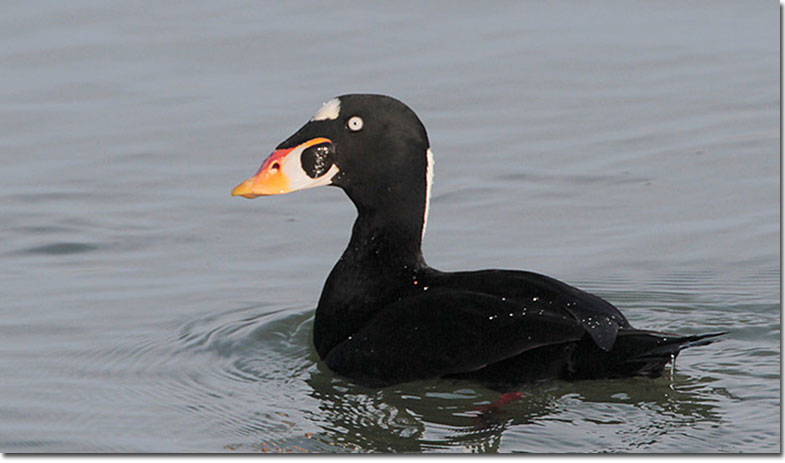Surf Scoters (Melanitta perspicillata) are mostly dark sea ducks with bulky bills and a curious nickname – “old skunkhead”. They prefer coastal habitats where they dive to catch aquatic invertebrates. Here is an overview of what you need to know about them.
On this page
Identification
Surf Scoters are medium-sized diving ducks, measuring 17-21 inches long with a wingspan of around 30 inches. They have pointed wings, sturdy necks, and fairly large heads with heavy and large bills.
Male
Male Surf Scoters have overall jet-black plumage. They have white patches on their forehead and at the back of their necks. Their bills are orange, red, and white and their eyes are pale blue. Immature males look more like females and are a patchwork of dull grayish-brown and black feathers.
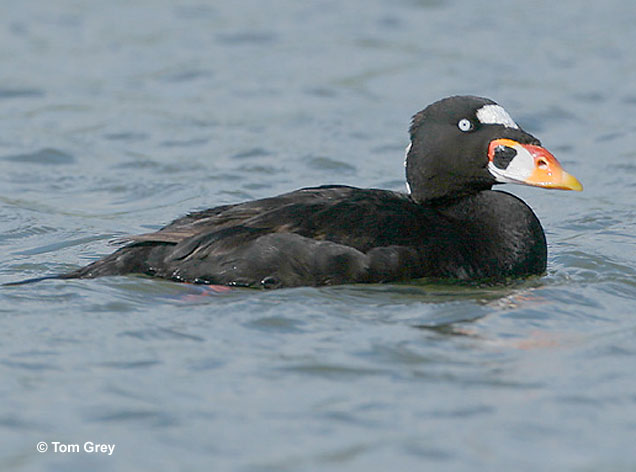
Female
Female Surf Scoters are not as striking as their male counterparts. Their plumage is dark brown all over. They have a white patch behind the bill, another one behind the eye, and a dark cap. Their eyes are brown and their bills are dark gray.
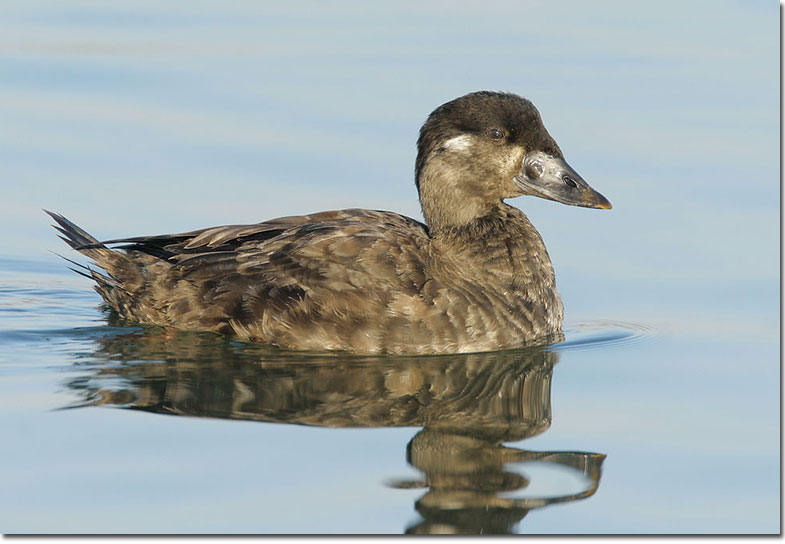
Juvenile Surf Scoters are similar to females. However, they are paler brown and their underside is whitish.
Vocalizations
These ducks are not particularly vocal compared to some other waterfowl, but they do produce a variety of sounds, especially during the breeding season.
Males gurgle or give explosive popping puk-puk calls. Females emit crow-like caws during courtship or when defending their offspring. If Surf Scoters are alarmed, they let out guk sounds and often take flight.
Food
Surf Scoter’s diet mainly focuses on aquatic invertebrates found at the bottom of water bodies. During the breeding season, they mostly catch freshwater invertebrates in pairs or small groups, whereas during the non-breeding season, they forage in flocks on marine organisms.
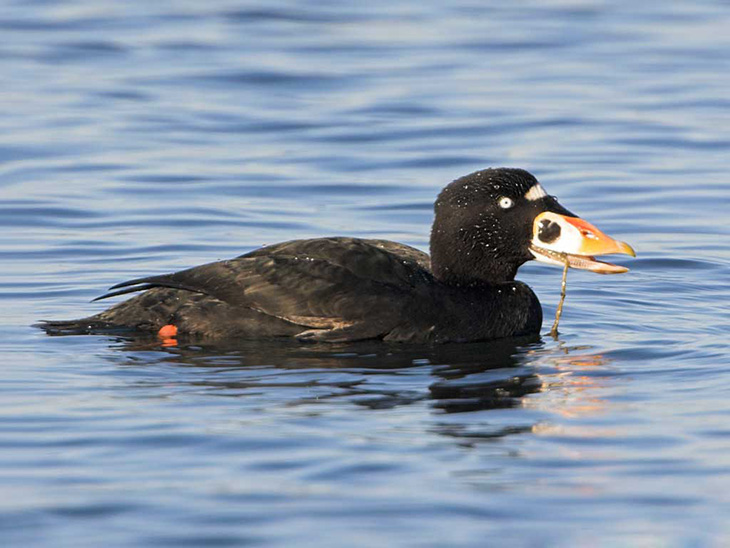
Some important prey items include crustaceans, gastropods, mussels, herring eggs, marine snails, small crabs, marine worms, hydrozoans, clams, small fish, and aquatic insects. They also munch on some plant material, including pondweeds, crowberries, and sedges.
Surf Scoters adjust their foraging habitat based on the season and food availability. They mostly hunt and consume their prey underwater. If they’re in a flock, they often dive in unison, but the duration of the dive varies depending on the prey and water depth.
Nesting and Eggs
Surf Scoters pair up for the breeding season before arriving on the breeding grounds. The courtship involves males swimming back and forth while holding their heads up high and occasionally dipping their bills in the water. They then face the female, shake their heads, preen, and give a gurgling call. Many males may approach a single female and they may also chase her underwater.
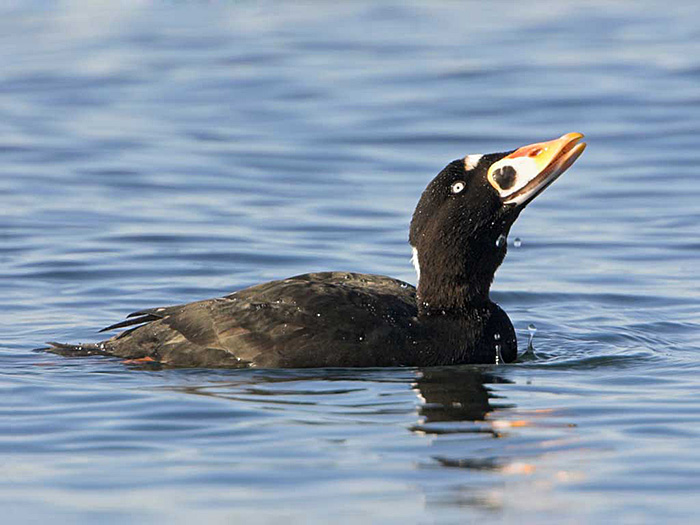
Surf Scoters nest on the ground near a body of water and well concealed under vegetation. The nest itself is about a 12-inch scrape lined with down feathers and plant matter, such as grass, needles, twigs, and moss.
They have only one brood per year with 5-9, on average 7 eggs in a clutch. Surf Scoter eggs are creamy white and measure 2.5-2.7 inches long and 1.8-1.9 inches wide. The female incubates them alone for 28-30 days.
Within a few hours after hatching, the mother bird leads her chicks to the water. Younglings forage food themselves under the watchful gaze of the female. They fledge at around 55 days of age but the female abandons them sometime before that.
Current Situation
Surf Scoters range across Canada and along the coasts of North America.
They breed in Canada and winter along both the east and west coasts of North America. During the non-breeding season, they favor coastal habitats, including both saltwater and brackish waters, estuaries, and bays.
They head further inland during the breeding season and inhabit freshwater bodies in semi-open terrain, including lakes and slow-moving rivers.
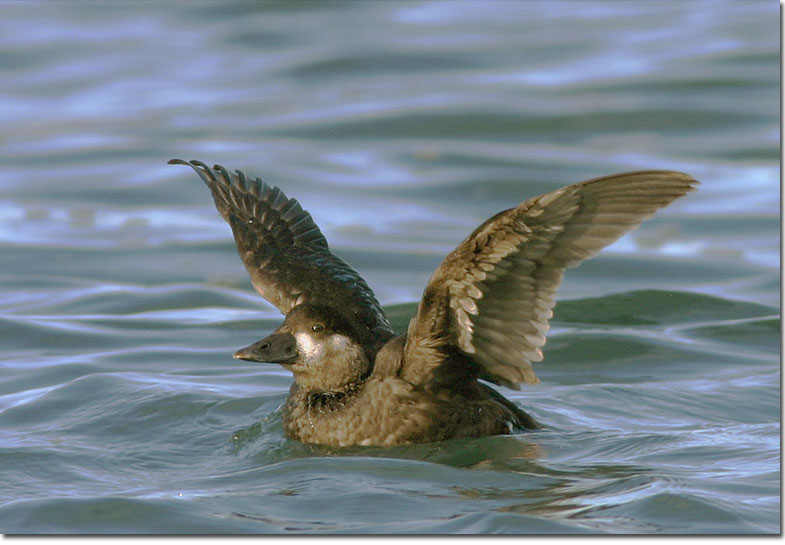
Surf Scoters are listed as of least concern on the IUCN Red List. However, their population is declining. This is due to habitat degradation due to climate change, oil spills, and pollution.
Facts
- Generally, males defend a certain territory. With Surf Scoters it is a bit different. They defend the area around a female rather than a fixed area.
- During the breeding season, Surf Scouter chicks can accidentally switch between broods.
- Some Surf Scouters may skip the migration to the breeding grounds and opt to stay on the wintering grounds instead.
- Surf Scouters live to 10 years on average in the wild. The oldest individual on record lived to be 19 years and 7 months old!
Similar Species
You look at their appearance and think that there’s no way you would ever confuse this duck for any other species. Well, as unique-looking as they are, there are surprisingly many similar species. We have listed three of the most similar ones and how to tell them apart.
White-winged Scoter
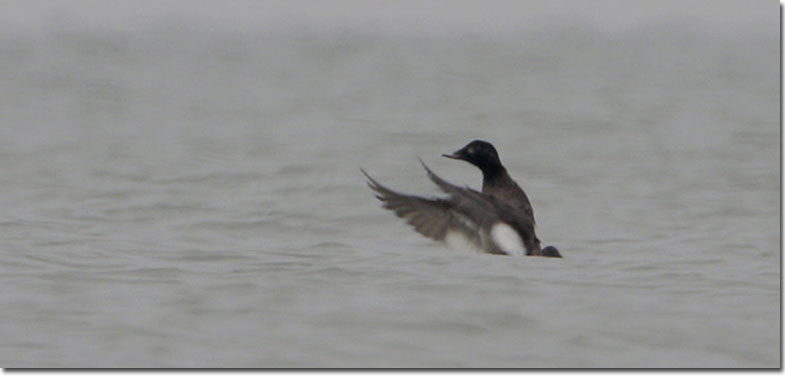
White-winged Scoters range along both coasts of North America, and throughout northern North America, and have a similar migration pattern to Surf Scouters. Male White-winged Scoters are blackish overall with white on their wings, a comma-shaped eye patch, and a knob at the base of their large bill. Females are brown overall and have a white wing patch, and two white patches on their face.
Male Surf Scoters have a white patch on their forehead and the back of their neck whereas male White-winged Scoters don’t. On the other hand, the latter has white on their wings and around their eyes which the Surf Scoter lacks. Their bills are also slightly smaller and less colorful. Females are fairly similar, but female White-winged Scoters have a white wing patch.
Black Scoter
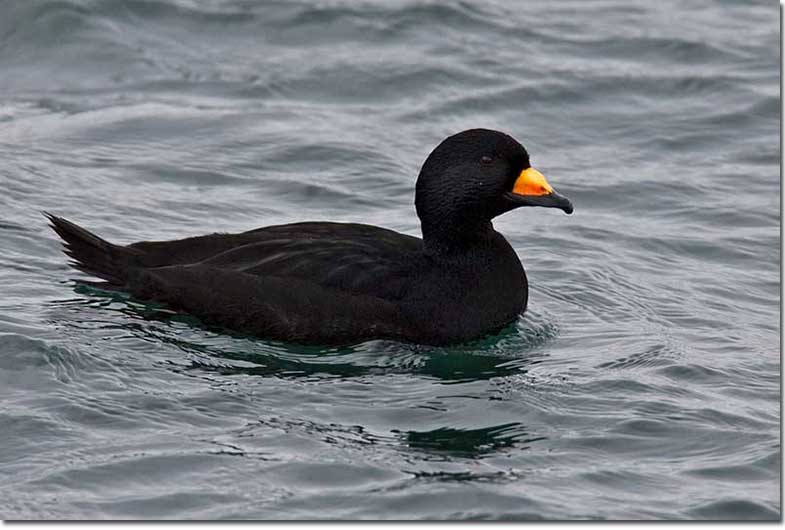
Black Scoters range across northeastern North America and Alaska with their breeding range extending south along both coasts. Males are black overall with brown eyes, black bills, and yellow knobs at the base of the bill. Females are brownish overall, have pale faces and dark caps, and large dark bills and brown eyes.
Male Black Scoters are entirely black and lack the two white patches in their plumage the Surf Scoter male has. They also have brown instead of pale eyes. Females are similar, but female Black Scoters have a darker cap and an overall pale face whereas female Surf Scoters are more uniformly brown and have two separate and smaller white patches on their faces.
American Coot
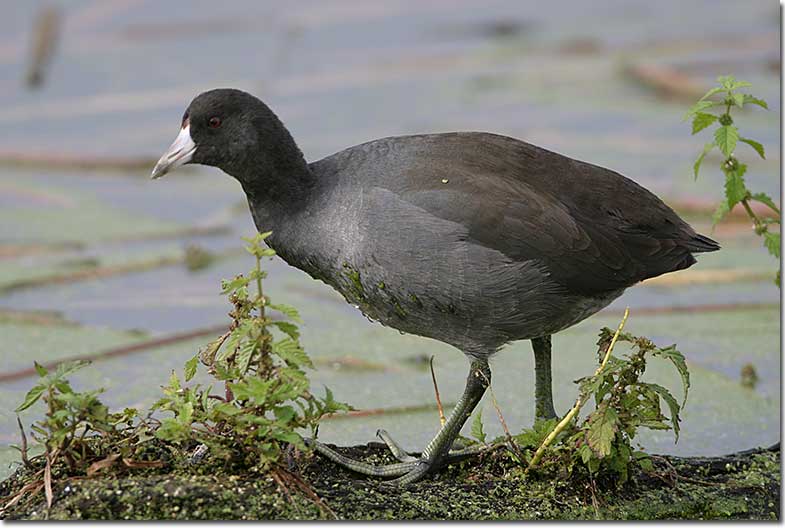
American Coots range across most of North and Central America. Both sexes have the same plumage. They are black, have dark red eyes, and a white sloping bill tipped in black. Compared to Surf Scoters, they are smaller, have a much thinner and less colorful bill, and red instead of pale eyes. They are also black overall and lack the two white patches the male Surf Scoter has.
Frequently Asked Questions
Where do Surf Scoters live?
Surf Scoters live along the coasts of North America in the winter and migrate to the freshwater bodies of water in the northern regions of North America for the breeding season.
What is the difference between a Surf Scoter and a Black Scoter?
Male Black Scoters are black overall with an orange knob on their bills whereas male Surf Scoters have a white patch on their forehead and the back of their neck and a colorful bill. Females are similar, but the female Black Scoter has an overall whitish cheek patch whereas the female Surf Scoter has two separate small white face patches.
How do you identify a scoter?
Scoters are overall dark sea ducks with bulky bills. The specifics depend on the species.

